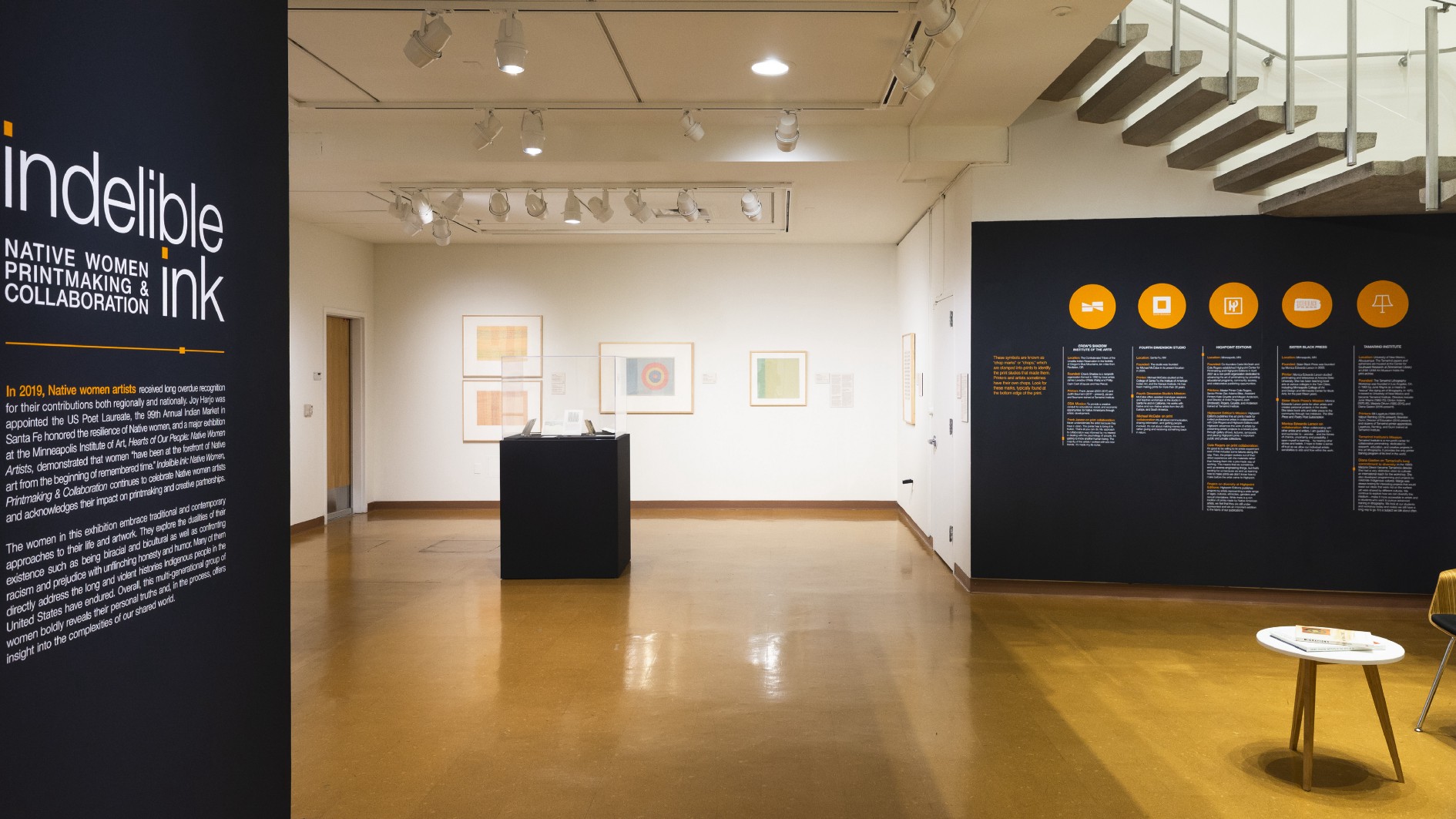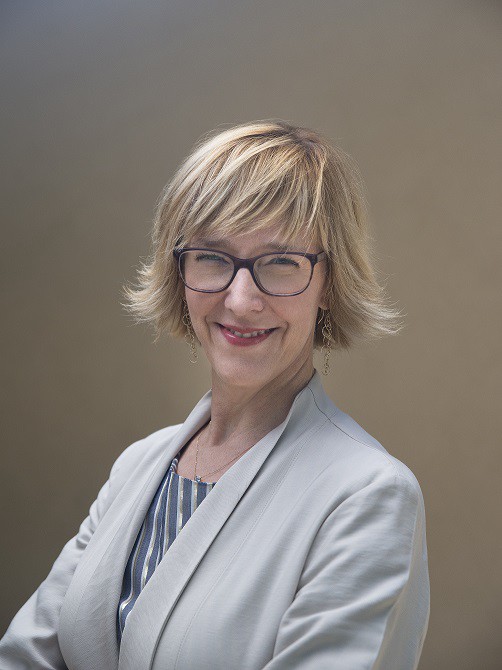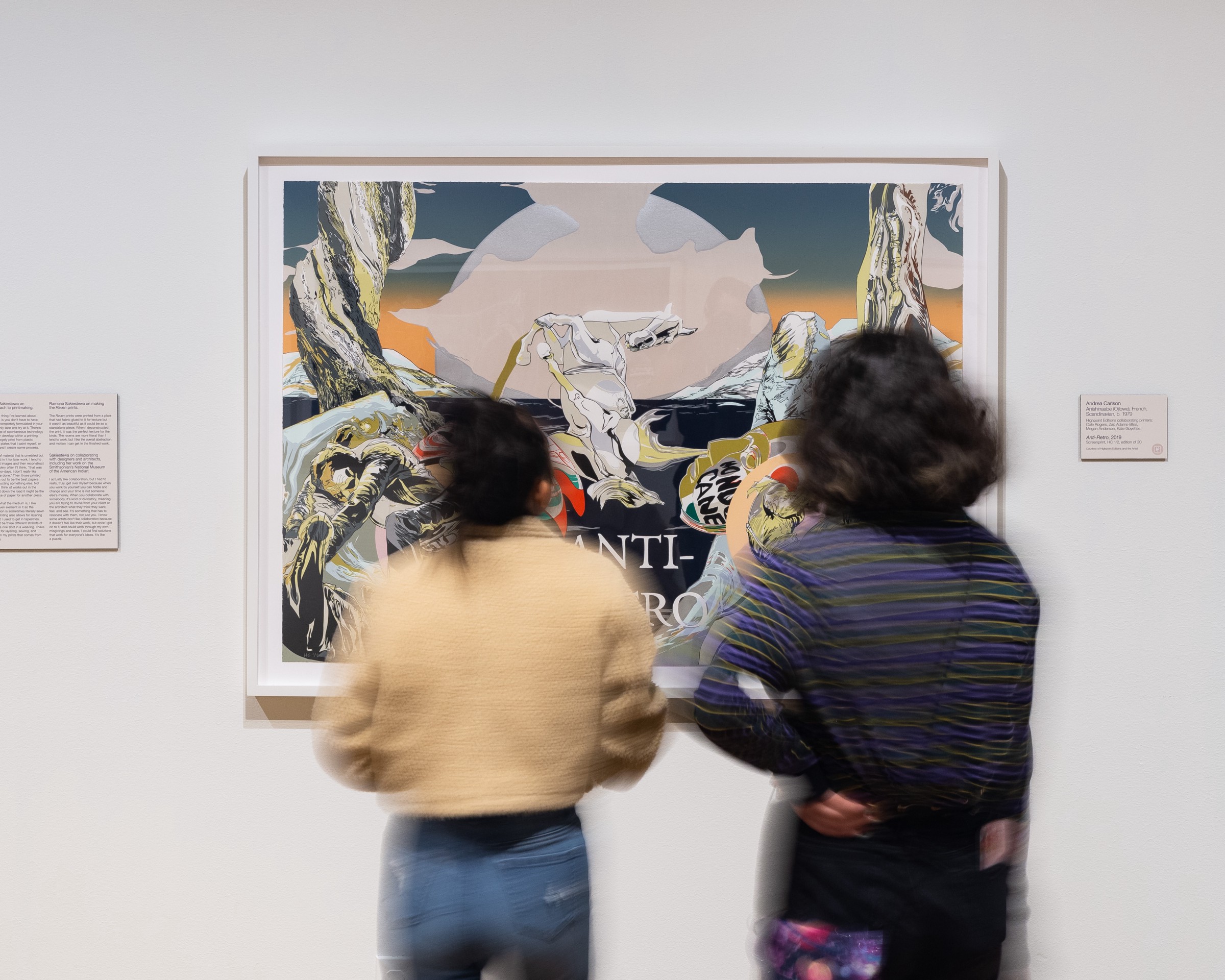Ask a Curator: Indelible Ink
Instagram Q&A with Mary Statzer

Have you ever wanted to know more about curation or a specific exhibition at the UNMAM? Today we are introducing a new series: Ask A Curator, featuring Mary Statzer.
 Mary Statzer is Curator of Prints and Photographs at University of New Mexico Art Museum. She organizes exhibitions in all mediums of art. Mary is dedicated to serving the community through object-based learning and creating relevant exhibitions that challenge, delight, inspire, and inform viewers.
Mary Statzer is Curator of Prints and Photographs at University of New Mexico Art Museum. She organizes exhibitions in all mediums of art. Mary is dedicated to serving the community through object-based learning and creating relevant exhibitions that challenge, delight, inspire, and inform viewers.
Mary’s recent work includescuration of Indelible Ink: Native Women, Printmaking, Collaboration. Featuring the work of nine native women, Indelible Ink explores collaboration as a generative artmaking process and a way of life. The exhibition features prints created between 1993–2019 in a variety of media — lithography, screen printing, mono-printing, and letterpress. Indelible Ink: Native Women, Printmaking, Collaboration is on view at the UNM Art Museum until May 9th, 2020.
In light of the museum’s recent closure due to the coronavirus (COVID-19) crisis, we are offering our visitors an opportunity to connect with Mary’s work outside of the museum’s walls. On Tuesday, March 24th, we asked our Instagram followers to submit questions about Mary’s curatorial process and experience developing Indelible Ink.
Thank you to everyone who participated by submitting their questions. We are very excited to share Mary’s insights with you!
What did you study to become a curator?
I started out as an artist. I got my BFA and MFA in drawing and printmaking. After school, I worked a lot of jobs that contributed to my informal education, including seven years at Phoenix Art Museum where I had strong and generous mentors. I went back to school for my PhD in the History and Theory of Art and specialized in museum history and American photography from the 1960’s and 70’s. Oh, and I also did coursework in psychology along the way, which has come in handy!
What is your favorite part of this job?
I love seeing and being around all kinds of ideas and art objects every single day. Artists are some of my favorite people in the world. Being in conversation with smart, engaged, hard-working artists is a privilege and an honor. Bringing those conversations and the expansive ideas they represent to new audiences is why I get up in the morning.

What inspired you to put this show (Indelible Ink) together?
So many things inspired me but one of them was the Minneapolis Institute of Art’s exhibition, Hearts of Our People: Native Women Artists. I attended the MIA’s symposium and was blown away by the energy of the Indigenous artists who were there. I still get goose bumps when I think about it. I wanted to extend the reach of that groundbreaking exhibition by organizing my own show, featuring Native women. In my own ways, I also tried to emulate MIA’s collaborative approach to curating. I see that as a potential game changer for me as a curator.
As a curator, what were you looking for in a piece when making the decision to include it?
I looked at a lot of beautiful prints but the ones that challenge the dominant narrative of white settler culture interest me the most. I also looked for artists who use humor and storytelling to deliver tough content that some viewers find demanding and difficult.

What is your own experience in this area of art?
I have no specific training in Indigenous art history, which is a vast and complex area of study. In NO way do I see myself as an expert in this area. I think it is important to be honest about that — with myself and others.
I expressed this understanding in the exhibition in a couple of ways. First of all, I focused on print collaboration, something which I do have direct experience with and continue to study. Second, I intentionally made my own voice secondary to the artists by featuring interviews with them on the exhibition labels. Also, before the coronavirus outbreak, when I was able to give tours of the exhibition, I did not attempt to break down or decode the imagery and symbolism for non-Indigenous viewers. That seemed disrespectful of complex, sometimes sacred knowledge that doesn’t “belong” to me.
For me, being a curator is not about being an expert in all things Art. While I’ve devoted my life to studying art, I think it’s more important to be curious and to ask thoughtful, respectful questions. However, it is absolutely my responsibility to find the most engaging ways to communicate what I’ve learned to a diverse audience.

What was your favorite part about curating the exhibit?
Getting to know the artists and their collaborators by interviewing them. Our conversations were candid and full of ideas and insights — not just about art but life in general. This exhibition would not have happened without their generosity. Also, it was very exciting to open the crates and see these stunning prints all together for the first time.
What was the hardest part about curating the show?
Narrowing down the list to just 9 artists was difficult. There are many Native women making wonderful prints. Melanie Yazzie comes to mind. UNMAM featured her in a solo exhibition before I arrived. She’s a print world powerhouse!
All images in this post courtesy of Stefan Jennings Batista.
